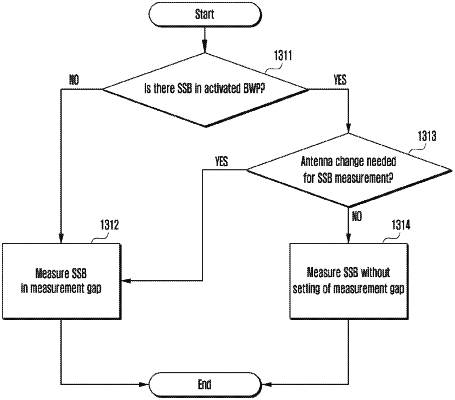| CPC H04B 7/0413 (2013.01) [H04B 7/0602 (2013.01); H04B 7/088 (2013.01)] | 15 Claims |

|
1. A method of a terminal in a wireless communication system, the method comprising:
identifying operating in a second antenna mode;
determining whether a synchronization signal/physical broadcast channel block (SSB) to be measured exists in an activated bandwidth part; and
in case that the SSB to be measured does not exist in the activated bandwidth part, measuring the SSB in a first measurement gap configured by a base station,
wherein the second antenna mode is a mode operating with a configured maximum number of multi-input multi-output (MIMO) layers smaller than a maximum number of MIMO layers notified to the base station by the terminal through capability reporting, and
wherein the first measurement gap includes a time T1 for an antenna change, a time T2 for radio frequency (RF) tuning, and an effective measurement time to measure the SSB.
|